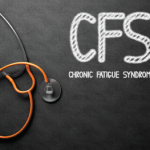The researchers adjusted cytokine levels for confounding factors, such as age, and identified 17 cytokines that tracked with the severity of illness, 13 of which were clearly pro-inflammatory. The biggest signals were from transforming growth factor (TGF)-β and resistin. “Resistin had this unusual funny behavior,” explained Dr. Montoya. “We really don’t have a good explanation for this.”
The presence of a TGF-β seemed more expected. TGF-β is a 112 amino acid protein with pleiotropic capacity. As such, it is involved in cell proliferation, differentiation, morphogenesis, tissue homeostasis and regeneration. It is also involved in the pathogenesis of Marfan syndrome. Although the presence of TGF-β in patients with ME/CFS is intriguing, Dr. Montoya acknowledges they cannot be certain their experiments are detecting the active form of TGF-β.
He also directed the audience’s attention to two other cytokines that may provide insights into disease. Leptin levels correlated with daily fatigue and severity of illness and chemokine (C-X-C motif) ligand 9 (CXCL9) were inversely correlated with fatigue duration. Dr. Montoya noted that the association disappeared when data were analyzed for severity.
Dr. Montoya also explained that his group found no correlation between disease severity and disease duration. He found this result puzzling and suggested the possibility that patients may remain in a given disease severity category. He concluded his presentation by proposing that scientists are approximately five years away from truly understanding the biological correlates of ME/CFS. Right now, his data point to a “broad hyperactivation of the immune system that is hard to put in one box.”
Lara C. Pullen, PhD, is a medical writer based in the Chicago area.
Reference
- Montoya JG, Holmes TH, Anderson JN, et al. Cytokine signature associated with disease severity in chronic fatigue syndrome patients. Proc Natl Acad Sci USA. 2017 Aug 22;114(34):E7150–E7158.



